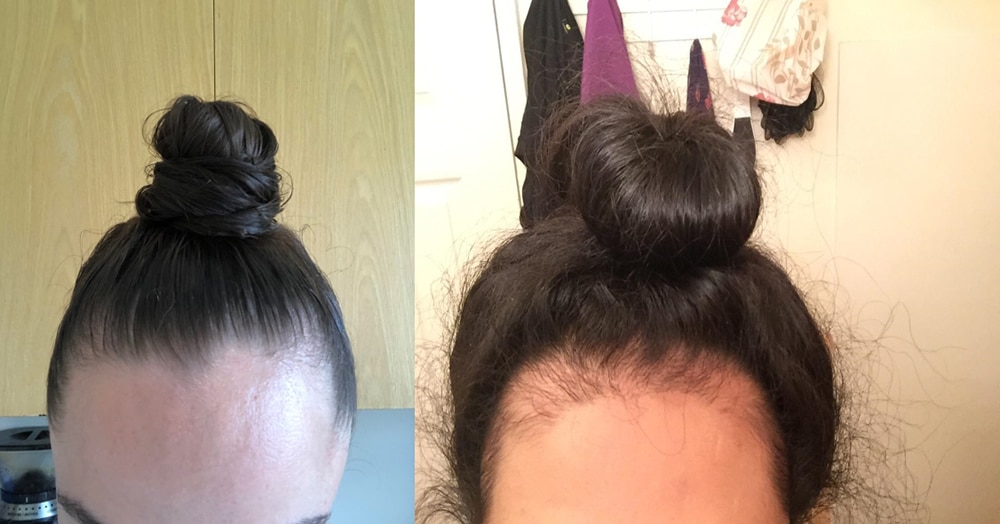 Let’s start with another question. How many of you pull your hair tight into a ponytail or a bun? Most of us do that (or have done it) but have you ever thought about what happens to your hair when you do that? When your hair is pulled too tightly, this can cause hair loss that could cause damage to the hair follicles. Here is what you need to know to protect your hair against follicular damage.
Let’s start with another question. How many of you pull your hair tight into a ponytail or a bun? Most of us do that (or have done it) but have you ever thought about what happens to your hair when you do that? When your hair is pulled too tightly, this can cause hair loss that could cause damage to the hair follicles. Here is what you need to know to protect your hair against follicular damage.
ALOPECIA DEFINED
The term “alopecia” is used to describe ANY type of hair loss. It is most often used in reference to significant and noticeable hair loss. It can happen for several reasons and most often it is because of a disturbance in the follicle. Not all forms of alopecia are permanent and some will allow your hair to regrow when the conditions improve in your scalp and follicles.
SO, WHAT IS “TRACTION ALOPECIA”?
Traction alopecia happens from hair being pulled too tightly for too long because it tugs on the follicle. Over a period of time, those hairs become weak and fall out. The hair that falls out as a result of this happens outside of the normal hair growth cycle. Usually, when a hair falls out in this manner, it will regrow later. Most often, traction alopecia does not cause serious damage, unless it continues to happen for an extended period of time and causes damage to the follicle.
If your hairline is receding hairline (temples or forehead and/or the nape) you could be developing traction alopecia. Other signs could be:
- Small pimples developing on the scalp or at the base of any braids.
- You have areas of skin that is shiny on your head, which is common in cases that are more severe.
- The hair part widens, exposing more of your scalp as it does.
If this sounds like what you have, it is important to start working on stopping the traction alopecia from occurring. It is possible to do this simply by changing the way you style your hair.
WHAT IS “SCARRING ALOPECIA”?
You cause damage to the hair follicle by not stopping the traction alopecia from occurring i.e. no more ponytails etc. Scar tissue develops in the follicle and if it becomes even slightly significant, it can make it next to impossible for the hair to continue to grow. When scarring alopecia forms you may find that your hair is no longer growing at a healthy rate and that your hair has stopped growing in areas. The receding hairline will remain the same.
There is no cure for scarring alopecia and it can’t be reversed if the damage is significant. That is why it’s imperative to stop traction alopecia as soon as you begin to notice any of the symptoms of it.
WHAT SHOULD YOU DO NOW?
A change of hairstyle is a HUGE help! So, no more cornrows, braids, dreadlocks, and tight ponytails! Frequent use of extensions and weaves also do damage. Even benign items like tight elastic headbands or helmets worn for sports can cause traction alopecia. Long hair also can be a cause as the weight of it pulls continuously on your scalp. Products like hair relaxers and perms can also increase your risks.
If you are seeing the signs of scarring alopecia, work to change what is causing it. By limiting the amount of pull on your hair, you are able to avoid much of the damage to it.

